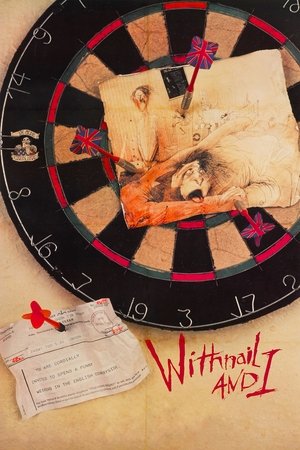
Withnail & I
**It's a good film, but it's very damaged by the abuse of alcohol, drugs and tobacco, and by the weakness of the script, in terms of narrative.** I expected a lot more from this movie, I have to confess. It is considered by many to be one of the best British comic films, and there is no doubt that the dialogues and situations were extremely funny, and it is not difficult to laugh at the absurd situations and conversations that are observed here. But it's also no lie that the film is far from being a work of perfection. The script is based on the coexistence between two characters, Withnail and another boy, whose name is never mentioned, and who supposedly tells the story in the first person. They are two aspiring actors, absolutely failed, penniless and sharing expenses and an apartment in Camden during the late 60s, that is, in the midst of the cultural revolution and the golden years of drug use. Tired of the rot in which they live, they decide to go to the country house of a Withnail's uncle, not knowing that the place is inhospitable for the city dwellers. The film has its moments, and this is largely due to a well written set of dialogues and absurd situations. Particularly memorable is the way in which Withnail practically deifies alcohol, not being able to remain sober for a minute, or the way in which he decides to go fishing with a shotgun, or even the journey of the two friends, in a beautiful old Jaguar that is truly a shame to see so mistreated. Unfortunately, the script and story don't go much further than this, and there isn't much material to support the film. On a narrative level, it is decidedly a very weak film. However, I was able to easily deal with it. The film will only be as good as the audience is willing to “let it flow” without thinking too much about it, simply taking advantage of the many comic opportunities created. More than once, I felt that the film would work perfectly as a stage play, even more so than in the cinema. Very difficult to digest, however, is the constant apology for alcohol and drugs. I am sure that this was not the intention of the producers, but the fact that the characters are under the use of these substances for so long can really bother current audiences, who view the abuse of alcohol, tobacco and drugs in cinema less sympathetically. I tend to be quite open about this, but several times, in several scenes, I felt that the film was treading on dangerous ground in this regard. The film has a reduced cast and only three actors deserve a mention. Richard Grant and Paul McGann made their cinematic debut with this film… and what a debut! Grant, perhaps without ever having imagined it, had the role of his career in this film, as no other work of his was as popular and as remarkable as this one. McGann was also very good, although he is not able to compete much with Grant, who has a much more intense and complex character. The late and late Richard Griffiths also appears here and plays a small role, but one that is very well done. The film is not brilliant on a technical level, but there are some points I would like to highlight, the cinematography being the most relevant of them all. I don't know how this was achieved, but it is very evident that the film was able to emulate the look and characteristics of a film made in the 60s. I believe that the secret was in the light, in choosing the right film and the most suitable camera, as well as a good set of costumes and props. I especially enjoyed seeing Withnail's costume. In his clothes, he looks like a seedy, broke, alcoholic Mr. Darcy. There are also some visually notable scenes, like the roadside scenes, or the scene where the two friends leave Monty's house, and we see the stately demolition of an old Victorian house behind them.
